
While you're all hanging out at your computers clicking "refresh" for election news: a few thoughts on this recent response to @AaronFriedberg in @ForeignAffairs:
https://twitter.com/ForeignAffairs/status/1320456512616255488
The article itself provided a forum for Dr. Friedberg to respond-to-the-response itself, so I won't belabor the general international relations points made either in the original article or in the response, or in his final rejoinder.
What I would like to address is the specific assessment of the response's authors on the shape of China's growing military capabilities: that they appear to be the "banal reality" of a normal country building normal capabilities merely commensurate with growing economic power. 

IMO this assessment might have been an accurate one 5 or perhaps 10 years ago, but is out of touch with today's reality. It's now quite clear that the PLA's capabilities are of a scale that, indeed, can only be intended to force the US out of Asia and gain global power.
A few data points:
First, let's look at the development of China's PLA Rocket Force. One could perhaps have looked at China's short / medium range missile force (with perhaps dozens of anti-ship missiles) as one w/ banal & nonspecific intent - an ability to strike regionally...
First, let's look at the development of China's PLA Rocket Force. One could perhaps have looked at China's short / medium range missile force (with perhaps dozens of anti-ship missiles) as one w/ banal & nonspecific intent - an ability to strike regionally...
...and perhaps hold US CVNs at arm's length from China's coast.
But as early as 2017 we knew that China was practicing to use that missile force specifically against U.S. bases in Asia, because they *showed us* with full-scale practice targets that were mirror images of them:
But as early as 2017 we knew that China was practicing to use that missile force specifically against U.S. bases in Asia, because they *showed us* with full-scale practice targets that were mirror images of them:
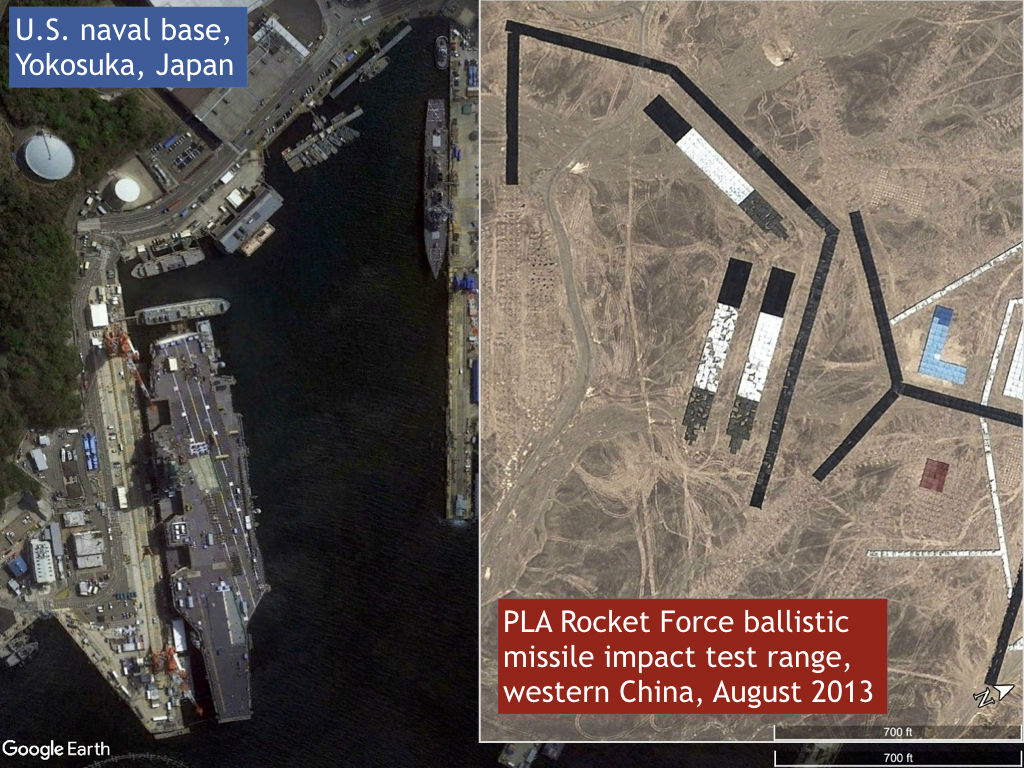
More recently, DoD revealed that China is in the process of deploying a new force of *hundreds* of precision-strike DF-26 intermediate-range missiles, all capable of either anti-ship or land attack missions (with swappable warheads). Details here:
https://twitter.com/tshugart3/status/1303435692068999168
The idea that a force this large, capable of striking over such a long range (see the red arcs), would be intended for mere "offshore waters" defense, or disputed claims of sovereignty with China's neighbors, seems absurd IMO. 


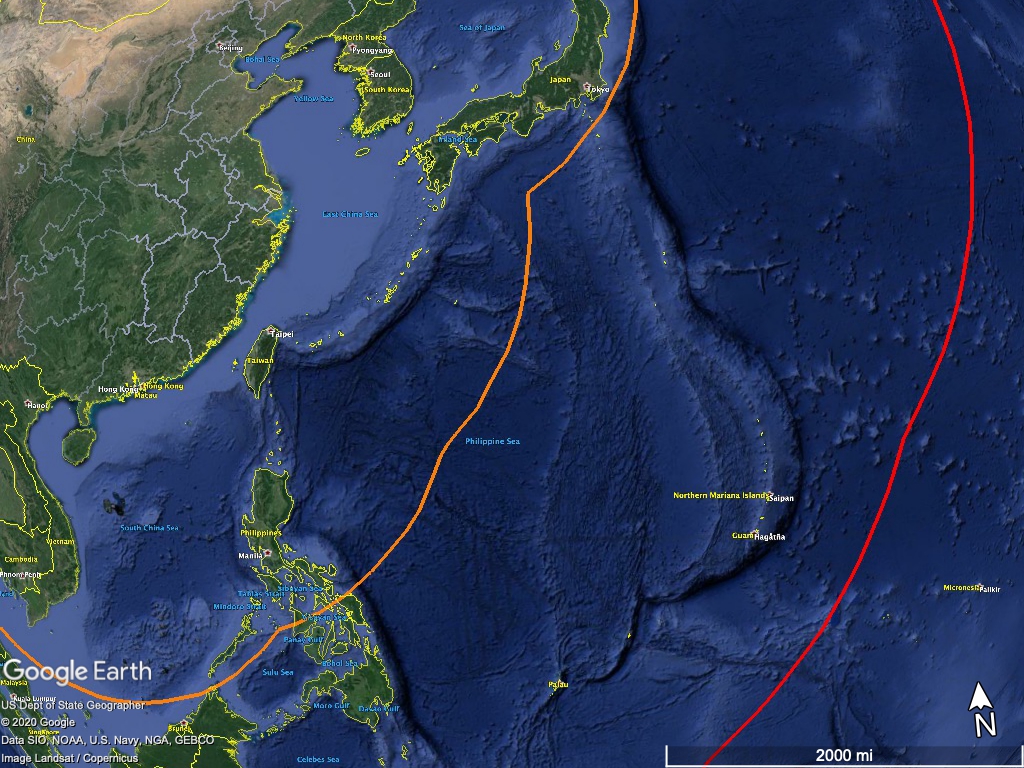
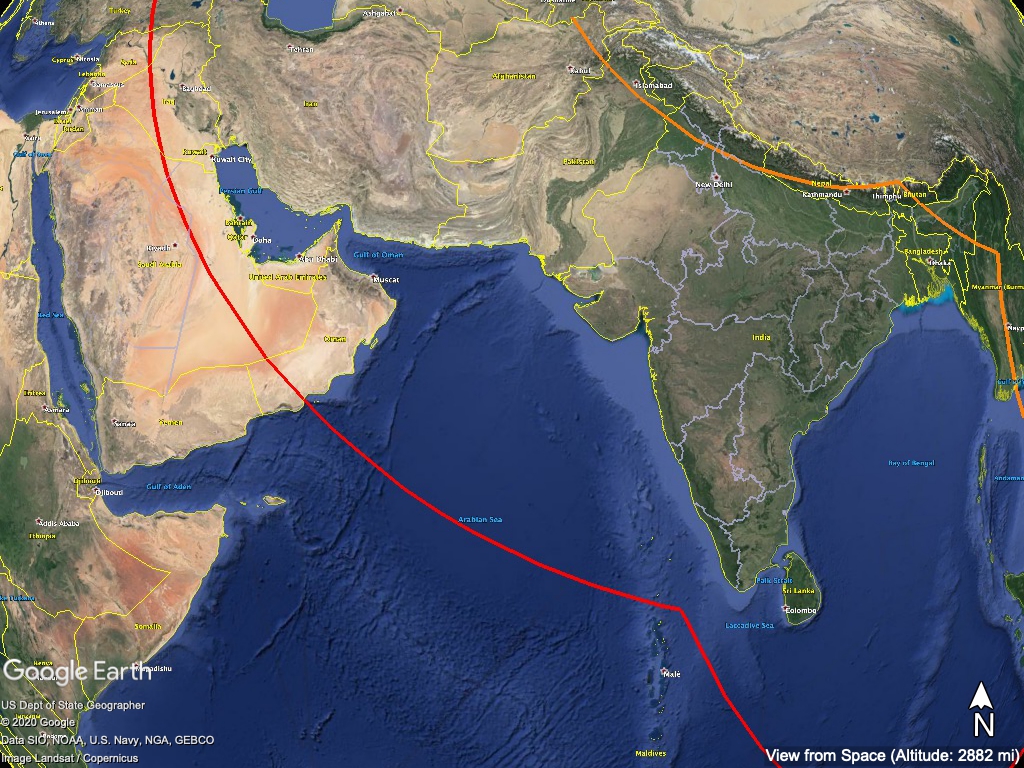
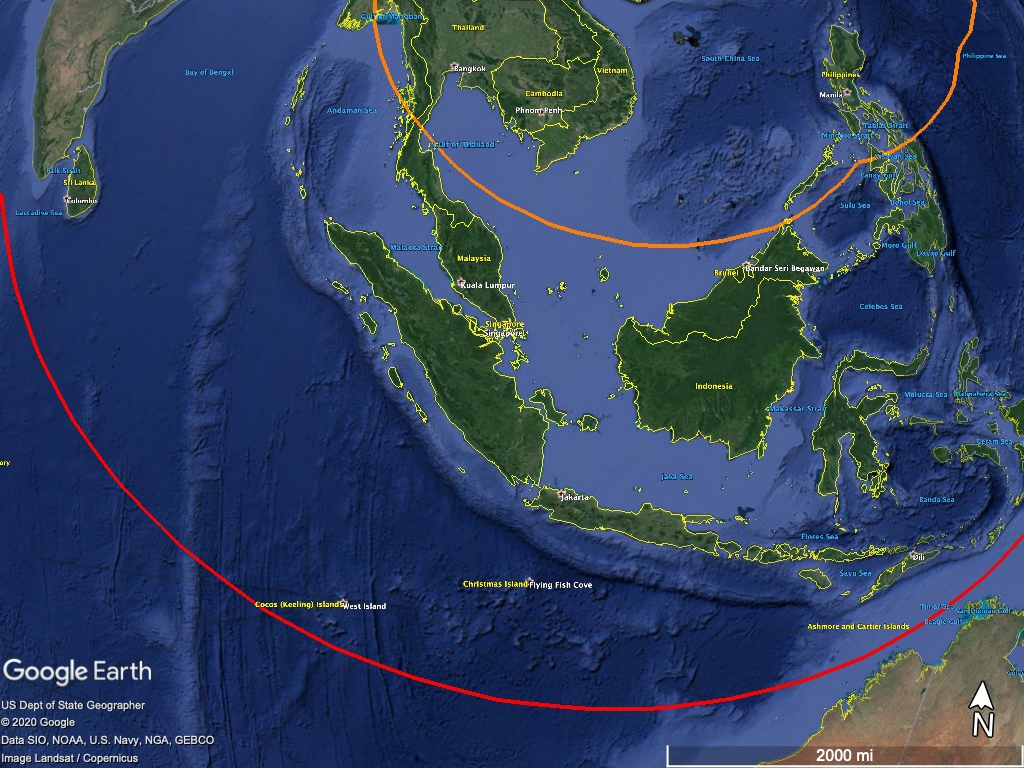
I mean, they even *told us* that the DF-26 was about the US: "China has the capability to make the US lose its aircraft carriers, and this is a key deterrent China should display..." globaltimes.cn/content/119694…
Moving on to the naval realm, China's rate of naval building has been in no way commensurate with building a normal naval force for ho-hum regional spats.
Over the last 5 years China has built, by far, the most tonnage of warships of anyone on the planet: 50% more than the USN.
Over the last 5 years China has built, by far, the most tonnage of warships of anyone on the planet: 50% more than the USN.

Over that time, China built *more than double* the tonnage of warships of all of the U.S.'s Indo-Pacific allies/partners (AUS+JPN+ROK+PHL+IND) *combined*.
Again, how is that in any way "banal", normal behavior for a regional power?
Again, how is that in any way "banal", normal behavior for a regional power?
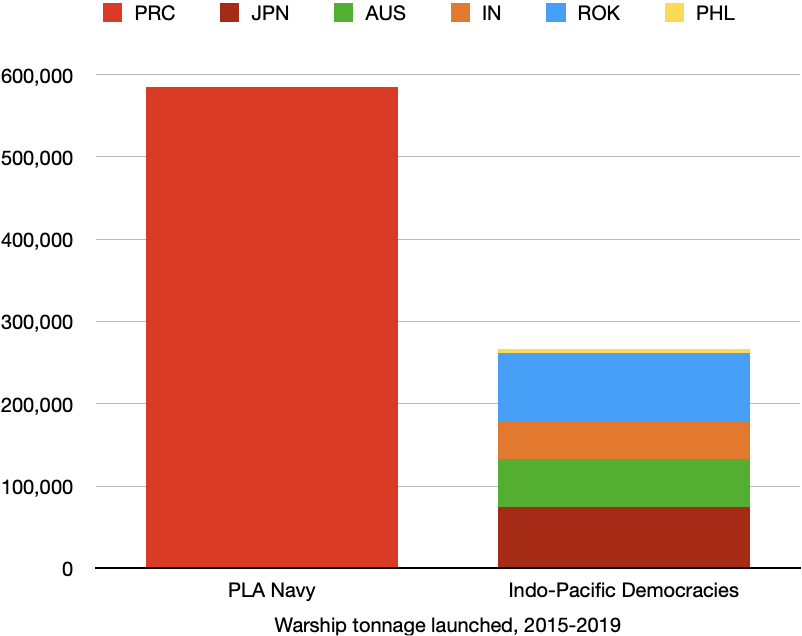
In terms of ship numbers, the PLAN has been building at a rate equivalent to the peak of the U.S. Navy's halcyon "600-ship Navy" buildup of the 1980s, when the USN was building to maintain global supremacy against the USSR.
https://twitter.com/tshugart3/status/1306311604032602113
It's quite clear that the PRC is building a world-class navy, not a regional one. And again, we don't have to guess this, as the Chinese have said it out loud: chinadaily.com.cn/a/201904/23/WS…
In terms of the response's authors' prescriptions, they recommend a "defense-oriented" force structure able to inflict "unacceptable damage" to Chinese air and naval assets without strikes on Chinese territory. 
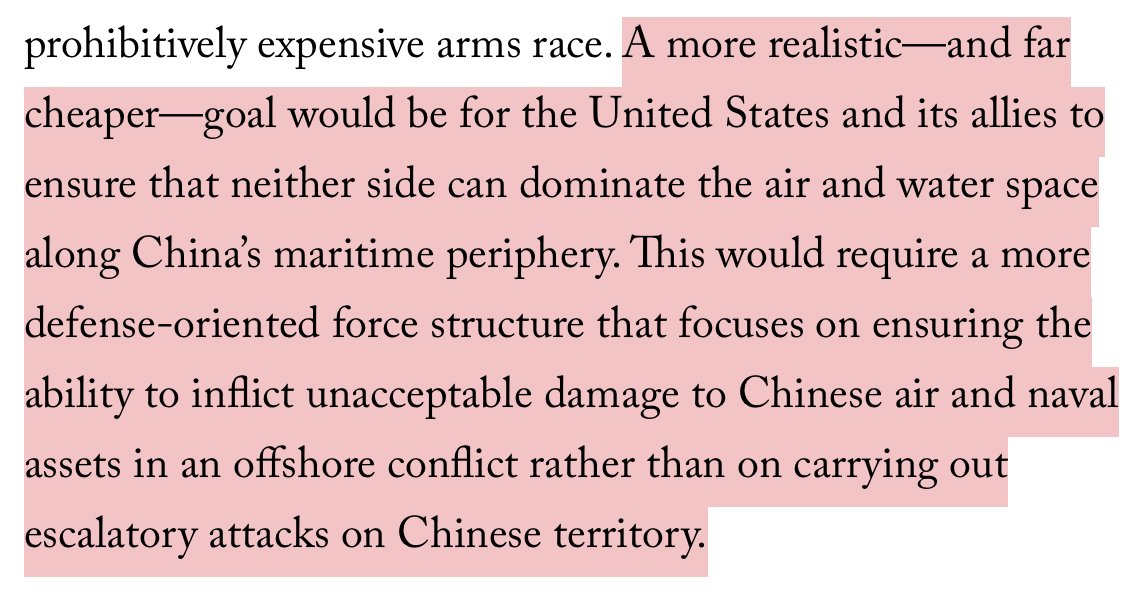
I think there are two problems with this: first, what would be a level of "unacceptable" damage to Chinese forces? It seems to me that would be dependent on what the Chinese would consider acceptable; based on the historical record, I'm guessing the answer could be "quite a lot".
Given the burgeoning scope of China's A2/AD forces (did I mention they're launching ballistic missiles from long-range bombers now?), the idea that the U.S. could inflict truly punishing damage with a "defense-oriented force structure" is IMO unrealistic. defensenews.com/global/asia-pa…
I mean, do we really think that China's building air-refuellable ALBM-launching bombers to go after the Philippines, or to pressure Indonesia over the Natuna Islands?
Clearly, they do have bigger fish in mind - the U.S. and its presence in Asia, as Dr. Friedberg stated.
Fin.
Clearly, they do have bigger fish in mind - the U.S. and its presence in Asia, as Dr. Friedberg stated.
Fin.
• • •
Missing some Tweet in this thread? You can try to
force a refresh







